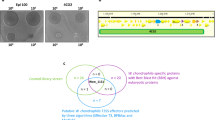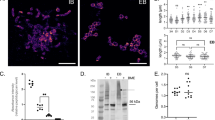Abstract
Members of the family Waddliaceae are obligate intracellular prokaryotes. The Waddliaceae have a unique biphasic developmental cycle that alternates between an infectious, metabolically inactive particle, the elementary body (EB), and a noninfectious, metabolically active, replicative form, the reticulate body (RB). Sometimes, a third form named aberrant body is observed and might be associated to persistence, with a potential of recurrence. The only one formally validated species is Waddlia chondrophila that is considered as an emerging pathogen for humans and animals. Indeed, W. chondrophila seems to be associated with bovine abortion as well as human respiratory diseases and miscarriage.
This pathogenicity is intimately linked to the capability of Waddliaceae to grow rapidly in several cell lines and to evade the early innate immune system. The Waddliaceae are capable to synthetize their own macromolecules, so they exhibit a relative independence to the host even if they are intimately associated to host cell mitochondria and endoplasmic reticulum during infection. Outer envelope of the Waddliaceae shares some features with the envelopes of Gram-negative organisms, and it exhibits a complete family of OmpA proteins that might help Waddliaceae to escape the immune system.
Waddlia chondrophila was first isolated by Dilbeck in 1990 and then by Henning in 2002. Because of the impossibility to genetically manipulate the Waddliaceae, very little is known about the biology and epidemiology of these bacteria.
Access this chapter
Tax calculation will be finalised at checkout
Purchases are for personal use only
Similar content being viewed by others
References
Baud D, Thomas V, Arafa A, Regan L, Greub G (2007) Waddlia chondrophila, a potential agent of human fetal death. Emerg Infect Dis 13:1239–1243
Baud D, Goy G, Osterheld MC, Borel N, Vial Y, pospischil A, Greub G (2011) Waddlia chondrophila: from bovine abortion to human miscarriage. Clin Infect Dis 52:1469–1471
Bertelli C, Collyn F, Croxatto A, Rückert C, Polkinghorne A, Kebbi-Beghdadi C, Goesmann A, Vaughan L, Greub G (2010) The Waddlia genome: a window into chlamydial biology. PLos One 5:e10890
Bizzini A, Jaton K, Romo D, Bille J, Prod’hom G, Greub G (2011) Matrix-assisted laser desorption ionization-time of flight mass spectrometry as an alternative to 16S rRNA gene sequencing for identification of difficult-to-identify bacterial strains. J Clin Microbiol 49:693–696
Blumer S, Greub G, Waldvogel A, Hassig M, Thoma R, Tschuor A, Pospischil A, Borel N (2011) Waddlia, Parachlamydia and Chlamydiaceae in bovine abortion. Vet Microbiol 152:385–393
Chua PK, Corkill JE, Hooi PS, Cheng SC, Winstanley C, Hart CA (2005) Isolation of Waddlia malaysiensis, a novel intracellular bacterium, from fruit bat (Eonycteris spelaea). Emerg Infect Dis 11:271–277
Corsaro D, Feroldi V, Saucedo G, Ribas F, Loret JF, Greub G (2009) Novel Chlamydiales strains isolated from a water treatment plant. Environ Microbiol 11:188–200
Croxatto A, Greub G (2010) Early intracellular trafficking of Waddlia chondrophila in human macrophages. Microbiology 156:340–355
Croxatto A, Prod’hom G, Greub G (2012) Application of MALDI-TOF mass spectrometry in clinical diagnostic microbiology. FEMS Microbiol Rev 36:380–407
Dilbeck PM, Evermann JF, Crawford TB, Ward AC, Leathers CW, Holland CJ, Mebus CA, Logan LL, Runrangirwa FR, McGuire TC (1990) Isolation of a previously undescribed rickettsia from an aborted bovine fetus. J Clin Microbiol 28:814–816
Dilbeck-Robertson P, McAllister MM, Bradway D, Evermann JF (2003) Results of a new serologic test suggest an association of Waddlia chondrophila with bovine abortion. J Vet Diagn Invest 15:568–569
Draghi A 2nd, Popov VL, Kahl MM, Stanton JB, Brown CC, Tsongalis GJ, West AB, Frasca S Jr (2004) Characterization of “Candidatus piscichlamydia salmonis” (order Chlamydiales), a chlamydia-like bacterium associated with epitheliocystis in farmed Atlantic salmon (Salmo sala). J Clin Microbiol 42:5286–5297
Goy G, Croxatto A, Greub G (2008) Waddlia chondrophila enters and multiplies within human macrophages. Microbes Infect 10:556–562
Goy G, Croxatto A, Posfay-Barbe KM, Gervaix A, Greub G (2009) Development of a real-time PCR for the specific detection of Waddlia chondrophila in clinical samples. Eur J Clin Microbiol Infect Dis 28:1483–1486
Goy G, Greub G (2009) Antibiotic susceptibility of Waddlia chondrophila in Acanthamoeba castellanii amoeba. Antimicrob Agents Chemother 53:2663–2666
Greub G (2010) International Committee on Systematics of Prokaryotes. Subcommittee on the taxonomy of the Chlamydiae: minutes of the closed meeting, 21 June 2010, Hof bei Salzburg, Austria. Int J Syst Evol Microbiol 60:2694
Haider S, Collingro A, Walochnik J, Wagner M, Horn M (2008) Chlamydia-like bacteria in respiratory samples of community-acquired pneumonia patients. FEMS Microbiol Lett 281:198–202
Henning K, Schares G, Granzow H, Polster U, Hartmann M, Hotzel H, Sachse K, Peters M, Rauser M (2002) Neospora caninum and Waddlia chondrophila strain 2032/99 in a septic stillborn calf. Vet Microbiol 85:285–292
Hogan RJ, Mathews SA, Mukhopadhyay S, Summersgil JT, Timms P (2004) Chlamydial persistence: beyond the biphasic paradigm. Infect Immun 72:1843–1855
Kebbi-Beghdadi C, Cisse O, Greub G (2011) Permissivity of Vero cells, human pneumocytes and human endometrial cells to Waddlia chondrophila. Microbes Infect 13:566–574
Kebbi-Beghdadi C, Lienard J, Uyttebroeck F, Baud D, Riederer BM, Greub G (2012) Identification of immunogenic proteins of Waddlia chondrophila. PLos One 7:e28605
Kocan KM, Crawford TB, Dilbeck PM, Evermann JF, McGuire TC (1990) Development of a rickettsia isolated from an aborted bovine fetus. J Bacteriol 172:5949–5955
Lamoth F, Greub G (2010) Amoebal pathogens as emerging causal agents of pneumonia. FEMS Microbial Rev 34:260–280
Lienard J, Croxatto A, Prod’hom G, Greub G (2011) Estrella lausannensis, a new star in the Chlamydiales order. Microbes Infect 13:1232–1241
Michel R, Steinert M, Zoller L, Hauroder B, Henning K (2004) Free-living Amoebae may serve as hosts for the Chlamydia-like bacterium Waddlia chondrophila isolated from an aborted bovine fœtus. Acta Protozool 43:37–42
Rurangirwa FR, Dilbeck PM, Crawford TB, McGuire TC, McElwain TF (1999) Analysis of the 16S rRNA gene of micro-organism WSU 86-1044 from an aborted bovine fœtus reveals that it is a member of the order Chlamydiales: proposal of Waddliaceae fam. nov., Waddlia chondrophila gen. nov., sp. nov. Int J Syst Bacteriol 49(Pt2):577–581
Thomas V, Casson N, Greub G (2006a) Criblamydia sequanensis, a new intracellular Chlamydiales isolated from Seine river water using amoebal co-culture. Environ Microbiol 8:2125–2135
Thomas V, Herrera-Rimann K, Blanc DS, Greub G (2006b) Biodiversity of amoebae and amoeba-resisting bacteria in a hospital water network. Appl Environ Microbiol 72:2428–2438
Thomas V, Loret JF, Jousset M, Greub G (2008) Biodiversity of amoebae and amoeba-resisting bacteria in a drinking water treatment plant. Environ Microbiol 10:2728–2745
Author information
Authors and Affiliations
Corresponding author
Editor information
Editors and Affiliations
Rights and permissions
Copyright information
© 2014 Springer-Verlag Berlin Heidelberg
About this entry
Cite this entry
Pilloux, L., Greub, G. (2014). The Family Waddliaceae . In: Rosenberg, E., DeLong, E.F., Lory, S., Stackebrandt, E., Thompson, F. (eds) The Prokaryotes. Springer, Berlin, Heidelberg. https://doi.org/10.1007/978-3-642-38954-2_154
Download citation
DOI: https://doi.org/10.1007/978-3-642-38954-2_154
Published:
Publisher Name: Springer, Berlin, Heidelberg
Print ISBN: 978-3-642-38953-5
Online ISBN: 978-3-642-38954-2
eBook Packages: Biomedical and Life SciencesReference Module Biomedical and Life Sciences




